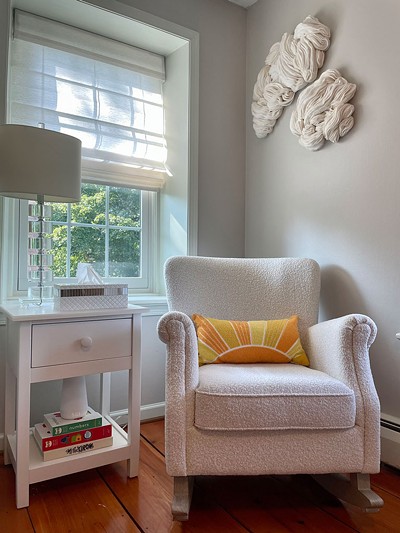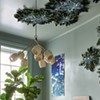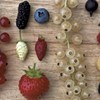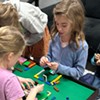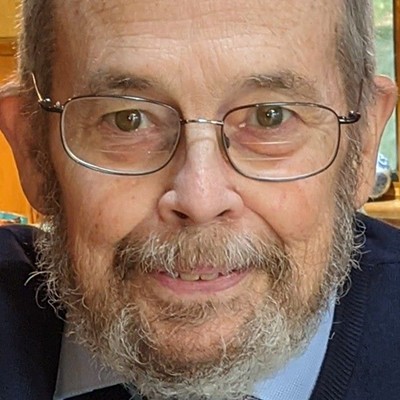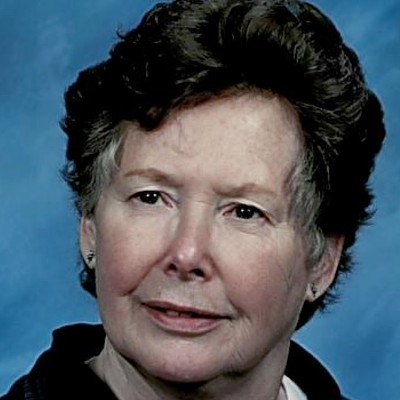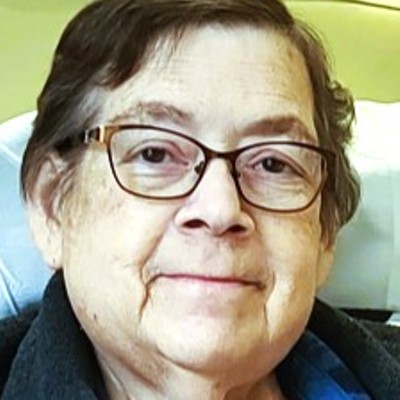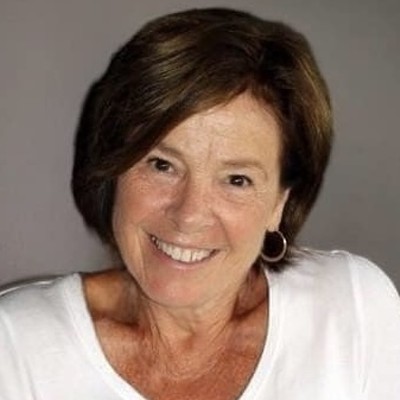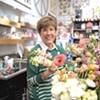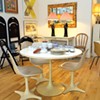Switch to the mobile version of this page.
Vermont's Independent Voice
- News
- Arts+Culture
- Home+Design
- Food
- Cannabis
- Music
- On Screen
- Events
- Jobs
- Obituaries
- Classifieds
- Personals
Browse News
Departments
-
Education

Scott Official Pushes Back on Former State…
-
News

Burlington Budget Deficit Balloons to $13.1 Million
-
Education

Senate Committee Votes 3-2 to Recommend Saunders…
- Court Rejects Roxbury's Request to Block School Budget Vote Education 0
- Norwich University Names New President Education 0
- Media Note: Mitch Wertlieb Named Host of 'Vermont This Week' Health Care 0
Browse Arts + Culture
View All
local resources
Browse Food + Drink
View All
Browse Cannabis
View All
-
Culture

'Cannasations' Podcaster Kris Brown Aims to 'Humanize'…
-
True 802

A Burlington Cannabis Shop Plans to Host…
-
Business

Judge Tosses Burlington Cannabiz Owner's Lawsuit
-
Health + Fitness

Vermont's Cannabis Nurse Hotline Answers Health Questions…
-
Business

Waterbury Couple Buy Rare Vermont Cannabis License
Browse Music
View All
Browse On Screen
Browse Events
Browse Classifieds
Browse Personals
-

If you're looking for "I Spys," dating or LTRs, this is your scene.
View Profiles
Special Reports
Pubs+More
Readsboro Artist Sienna Martz Gains a Following for Her Ethical Wall Sculptures
Published October 3, 2023 at 10:00 a.m.
It's hard to miss a Sienna Martz sculpture. Each one seems to grow right out of the wall, evocative of something you'd find in the natural world — or maybe Hayao Miyazaki's version of the natural world, if the Japanese filmmaker abandoned animation for plant-based fibers. Martz's blossom series features fingerlike appendages erupting from the wall in brilliant shades of aqua or amethyst. Another collection features plush circles slurping yarn noodles in hues of canary yellow, pomegranate and tropical sea.
Martz's pieces — fashioned from textiles — have been featured in numerous public and private collections worldwide. She's graced the pages of Architectural Digest and Elle Décor, among others. And for her more than 20,000 social media followers, she shares videos about her artistic process and life in rural Readsboro.
"She's popping up all over the place, and she's got her hand way outside of Vermont, which is amazing for her," said Kaitlin Mangan, an interior designer at Christine Burdick Design in Burlington.
Now, three years after arriving in Vermont, the vegan fiber artist has begun to attract a local following.
At the Northfield Savings Bank branch on Church Street in Burlington, Martz's latest sculpture spreads 13 feet across the wall, like a winged creature in flight, in shades of blue, red, purple and yellow. Up close, airy contours rise between the innumerable seams that separate hues.
"Everything has this textural component," said Mangan, who was the design project manager for the bank installation. "It has a very contemporary aesthetic overall, but also a great use of color."
Each contour in the sculpture, titled "The Conscious Wave to Harmony," is a slightly different size and shape. The soft fabric is strangely familiar — it's harvested from thrifted fast-fashion shirts that Martz cut, sewed and stuffed with organic plant fibers.
"I love the idea with secondhand clothing that there's a history to each piece," Martz said. "Even beyond the one person who wore it, to the person who made it."
From the expansive scope of this latest installation to the palm-size wall art that people can purchase on her website, Martz's work demands to be seen. But, in many ways, her behind-the-scenes activity is just as intriguing.
Natural Attraction
Martz lives off Route 100 along the Deerfield River, a sparsely populated area with far more mountains and trees than people. She shares a sweet timber-frame house with her partner, Marc; daughter, Luna Wilder; and an enormous mastiff/pit rescue named David Bowie. When Nest visited in early September, her house smelled enticingly like the meal she'd just cooked for lunch: homemade zucchini fritters, vegan queso sauce and chickpea salad.
Martz, 32, is willowy and a bit ethereal; that day she wore a long braid falling over one shoulder and cropped bangs that framed expressive eyes. Upstairs, her studio offers a window into her work. Peer closely, and you'll notice a wall full of tiny holes. Martz likes to pin up pieces of her work to get a better sense of how each sculpture plays with gravity.
She shared the wooden jigsaw pieces of a sculpture in progress, each carved into intricate curves and upholstered with batting and old clothes that will be fitted together to match her voluptuous concept sketch.
"I've been using a jigsaw, and I cut mainly outside because it's beautiful," Martz said, gesturing to the small brook and forested hills that drew her to Vermont in 2020 from Kingston, N.Y.
The riverfront town of Readsboro is far less urban than where Martz spent her childhood, in West Hollywood and Larchmont, half an hour from New York City. Later she lived in Philadelphia, where she received her bachelor of fine art in sculpture and textiles from Tyler School of Art and Architecture. But southern Vermont felt like a better place for her and Marc to raise their family, she said.
Martz opened a box of kapok fiber, which was silky to the touch and looked a lot like milkweed fluff. The fiber is harvested from the fruit of the fast-growing kapok tree and is cultivated without irrigation or pesticides, as opposed to water-intensive cotton or oil-guzzling synthetic fiber production. The material is used to stuff bedding and toys — or, in Martz's case, sculptures.
"Once I transitioned to a more sustainable approach with my art making, I was using a recycled polyester, but it felt a little bit off," she explained. "I just want to move away from plastic as much as I can and support companies that are really developing and pushing plant-based options."
The exception is the fast-fashion fabrics she thrifted for the Northfield Savings Bank sculpture. Those garments were poorly sewed and destined for the landfill; upcycling them requires less energy and resources than collecting and processing newly recycled materials.
Martz's commitment to environmentally friendly art is an extension of her personal values. Born and raised a vegetarian, she became an ethical vegan in her mid-twenties as she gained more understanding about large-scale agricultural practices that are often at odds with animal welfare and the planet.
"As I really started to follow the movement and educate myself, it became about what I was wearing, what products I was buying, what companies I was supporting, what restaurants I was going to," Martz said. "It just made sense that that would become part of my art making."
She uses organic bamboo as well as the kapok fibers and continues to experiment. During our visit, she held up four cakes of dense mushroom foam she'd just received in the mail. Her plan was to fuse and carve them.
Martz's affinity for plant-based materials has led to a broader appreciation of the natural world, and her artistic inspiration is often drawn from nature. Marc observed that her work resembles something you might see under a microscope — cells from a plant or mushroom or sea creature. But it is also as if she has removed the glass from the slide to remind viewers that those cells are voluminous and still very much alive. She acknowledged that a lot of her work incorporates elements of organic growth.
"We have been an incredibly destructive and parasitic species," Martz said. "And Mother Earth and all of these different species within her are having to adapt and react and sometimes take over."
Her pieces are often "kind of bursting out of a wall or a man-made structure," she mused. "They're reclaiming the space."
Growing Organically
click to enlarge 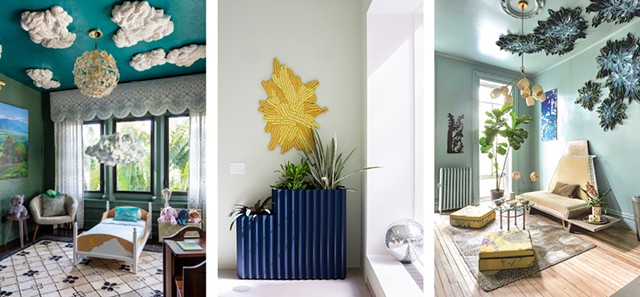

- Courtesy of Carmel Brantley (left) and Rikki Snyder (right)
- Wall sculptures created by Sienna Martz
Creating a connection between human spaces and the natural world is something Connie Dasilva calls biophilic design. As the founder of the sustainable design firm Whole Clarity in Kingston, N.Y., she often recommends Martz's work to clients.
"It's so different than almost everything I've seen out there," Dasilva said. "Her attention to detail, the colors, just the big activity of it is so incredible."
Martz's work can run from $980 to more than $10,000, depending on its size and complexity. But her online shop also includes small versions of large concepts, such as "micro mini slurps" that are priced at $89. She has moved away from freestanding sculpture to improve the accessibility of her art.
"It's much more ... likely that someone's going to have the space on their wall or a space within their home than to have this three-dimensional sculpture that's standing on its own or hanging from a ceiling," she said.
Martz handcrafts each piece, from sketch to saw and stuffing to stitching. Designers such as Mangan and Dasilva praise the quality of her work, including its clean execution and detailed installation instructions.
"Sienna is creating the felt that she's using in the sculpture," said Amy Wolfe, an art collector and longtime friend of Martz's from Yardley, Pa. "Considering how much effort is put in — which is a tremendous amount of effort — that's something that attracts me."
Wolfe installed a few of Martz's nebulous clouds, which are felted from organic cotton, in her daughter's nursery. When she posted photos of the finished design to her Instagram account, home furnishings company Pottery Barn asked to share them.
"It was very flattering, obviously, not to mention those pieces had already been in Architectural Digest," Wolfe said. "They're just cool little tidbits I can tell my daughter about when she's older."
Martz's warm demeanor and bohemian aesthetic have earned her a loyal following on social media. Meanwhile, her commitment to ethics has increasingly caught the eye of galleries and online art markets, especially as more supply chains are called out for inhumane practices and greenwashing. She noted that she has seen more interest in supporting and learning about sustainable art and art making over the past several years.
"I will forever be trying to be more sustainable as an artist," she said. "Knowing that it's not about perfection and just doing your best makes it less intimidating."
Martz's words underscore an unexpected correlation between creativity and sustainability: Both are practices that are nurtured and evolve in response to new information. As Martz's practice grows, it isn't clear what concepts or materials she will use in her next series.
But, given the clarity of her vision, you will know her art when you see it.
The original print version of this article was headlined "Green Weaver | A Readsboro fiber artist gains a following for her vibrant ethical wall sculptures"
Related Stories
Got something to say?
Send a letter to the editor
and we'll publish your feedback in print!
More By This Author
Speaking of...
-

Nest — Spring 2024
Apr 16, 2024 -

Original Glory: A Five-Year Renovation Turns Charlotte's '1812 Tavern' Into a Stunning Family Home Steeped in History
Apr 16, 2024 -

Home Is Where the Target Is: Suburban SoBu Builds a Downtown Neighborhood
Apr 16, 2024 -

A Room of Her Own: In Shelburne, a Backyard Cottage Provides Both a Haven and a Gathering Place
Apr 16, 2024 -

An Earthship-Inspired Greenhouse in Johnson Lets the Sunshine In
Jan 16, 2024 - More »
Comments
Comments are closed.
From 2014-2020, Seven Days allowed readers to comment on all stories posted on our website. While we've appreciated the suggestions and insights, right now Seven Days is prioritizing our core mission — producing high-quality, responsible local journalism — over moderating online debates between readers.
To criticize, correct or praise our reporting, please send us a letter to the editor or send us a tip. We’ll check it out and report the results.
Online comments may return when we have better tech tools for managing them. Thanks for reading.
- 1. Original Glory: A Five-Year Renovation Turns Charlotte's '1812 Tavern' Into a Stunning Family Home Steeped in History Home Tours
- 2. Home Is Where the Target Is: Suburban SoBu Builds a Downtown Neighborhood Real Estate
- 3. Nest — Spring 2024 Nest
- 4. A Room of Her Own: In Shelburne, a Backyard Cottage Provides Both a Haven and a Gathering Place DIY Home
- 5. Event: First-Time Home Buyers Invited to 'House Party' on April 24 7D Promo
- 6. Last Quarter: Spring 2024 Vermont Housing News Real Estate

























